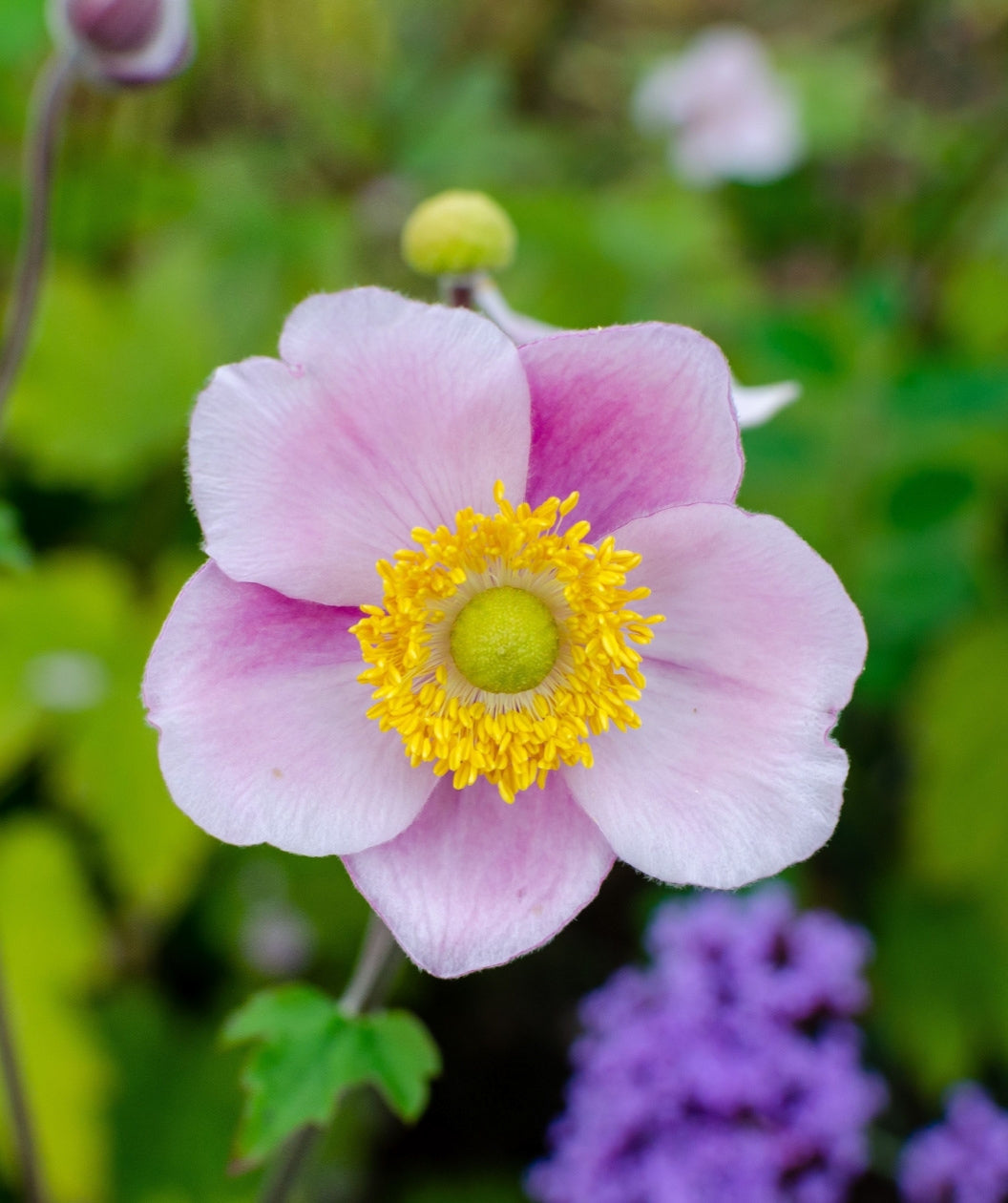PERFECTLY PINK PETALS IN LATE SUMMER
FEATURES:
- In mid-late summer, petite pink blooms emerge with a cheerful yellow center
- Glossy dark green foliage topped with beautiful pink blooms
- Ideal when planted in a cut flower garden, woodland gardens or lining your walkway
- Offers resistance to deer, rabbits, diseases and other pests
- Recipient of the prestigious Award of Garden Merit of the Royal Horticultural Society
-
Hand Selected, Fresh from the Grower
- Ships in a plant-safe designed box
Growth Facts
- Hardiness Zone: 4-8
- Mature Height: 3-4' tall
- Mature Width: 2-3' wide
- Exposure: Full Sun/Part Shade
- Spacing: 2-3' apart
PERFECTLY PINK PETALS IN LATE SUMMER
FEATURES:
- In mid-late summer, petite pink blooms emerge with a cheerful yellow center
- Glossy dark green foliage topped with beautiful pink blooms
- Ideal when planted in a cut flower garden, woodland gardens or lining your walkway
- Offers resistance to deer, rabbits, diseases and other pests
- Recipient of the prestigious Award of Garden Merit of the Royal Horticultural Society
-
Hand Selected, Fresh from the Grower
- Ships in a plant-safe designed box
Growth Facts
- Hardiness Zone: 4-8
- Mature Height: 3-4' tall
- Mature Width: 2-3' wide
- Exposure: Full Sun/Part Shade
- Spacing: 2-3' apart
Why plant September Charm Japanese Anemone?
The September Charm Japanese Anemone is so sweet and petite, it simply oozes charm! In late summer, tall and sturdy stems emerge overtop the dark green, glossy foliage before opening to a lovely pink bloom with a sunny yellow center! These flowers last from late summer to early fall, offering a late season show that benefits not only you, but bees and butterflies as well!
Earning the Award of Garden Merit by the Royal Horticultural Society, the September Charm Japanese Anemone was first discovered by Bristol Nurseries in 1932. However, to this day, the exact parentage of this particular cultivar remains a mystery!
How to use September Charm Japanese Anemone in the landscape?
Besides adding vibrant life to any location this perennial finds itself planted, there are a few other attributes that makes this a must have at any home. The September Charm Japanese Anemone is low maintenance, offers resistance to diseases and insects, is tolerant of deer and rabbits, and happily finds itself home in many locations due to its adaptability. These perennials do well when planted as borders, in themed gardens such as cottage, prairie, or meadow, or planted in groups creating a dancing field of blooms. We also can't forget to mention the abilities this perennial has at attracting pollinators such as bees and butterflies. One more thing, the September Charm Japanese Anemone blooms can be kept for yourself or cut for someone else gracing them with a lovely bouquet.
Planting Zones
Hardiness Zone: 4-8
How To Plant September Charm Japanese Anemone
The September Charm Japanese Anemone enjoys locations that offer full sun, however, they are capable of thriving in areas that offer partial shade as well. Living happily when planted in areas that promote rich, moist, well-draining soils, this perennial is also capable of growing in clay soils.
How To Water
After planting, you should water your September Charm Japanese Anemone at a minimum of twice a week until established. Once established, keep an eye on the soil to be sure that it doesn't dry down, these plants like it moist but not saturated. We recommend keeping an eye on your local weather making sure to water during periods of inclement weather such as high heat or drought.
How To Fertilize
Feeding your September Charm Japanese Anemone is as easy as can be! When first planting, we recommend adding fertilizer to the planting site. If you planted during the spring, re-apply fertilizer in late fall before the dormancy of winter. If you planted in fall, wait until spring before the push of new growth to fertilize your perennial. Remember these steps for the life of the plant and you will continue to have lavish blooms each year!
How To Prune
When considering the process of pruning your September Charm Japanese Anemone, no need to fret; we have you covered! After the growing season has come to an end, you will want to remove any dead or damaged stems. We also recommend removing any old foliage that may still reside on the plant - this will make way for the push of new growth in the following year.





